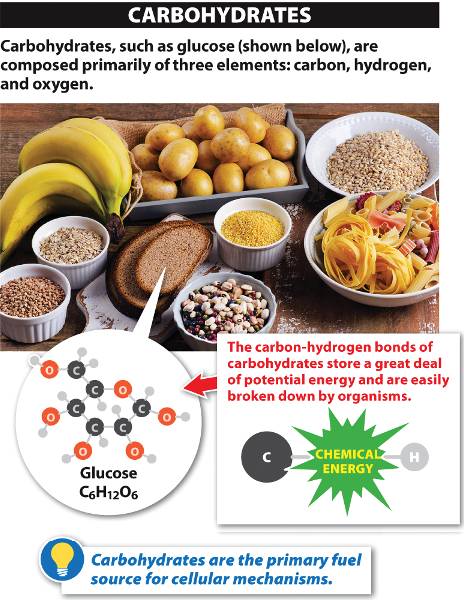 Carbohydrates (carbon and water) are made of C, H, and O,
and are the main source of energy for life.
Carbohydrates (carbon and water) are made of C, H, and O,
and are the main source of energy for life.
Like water, these molecules are polar
and are "hydrophilic" (water-loving).
The simplest carbohydrates (simple sugars) are
monosaccharides.
Larger carbohydrates (complex sugars) are
polysaccharides
linked by glucose subunits.
In addition to starch,
polysaccharides include
cellulose
and
glycogen.
Glucose
is the building block of most carbohydrates.

 Molecules of life
Molecules of life 
 Molecules of life
Molecules of life 